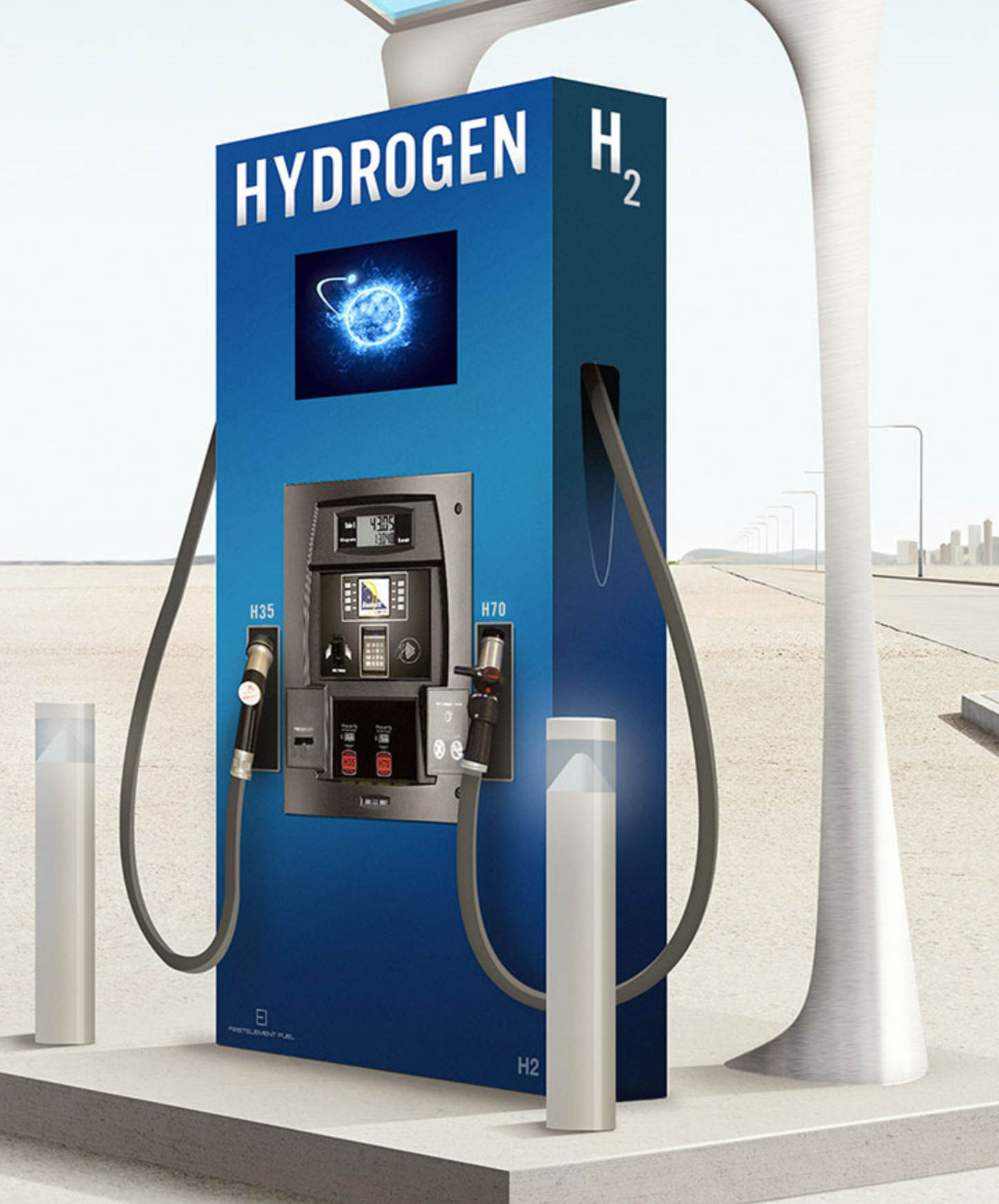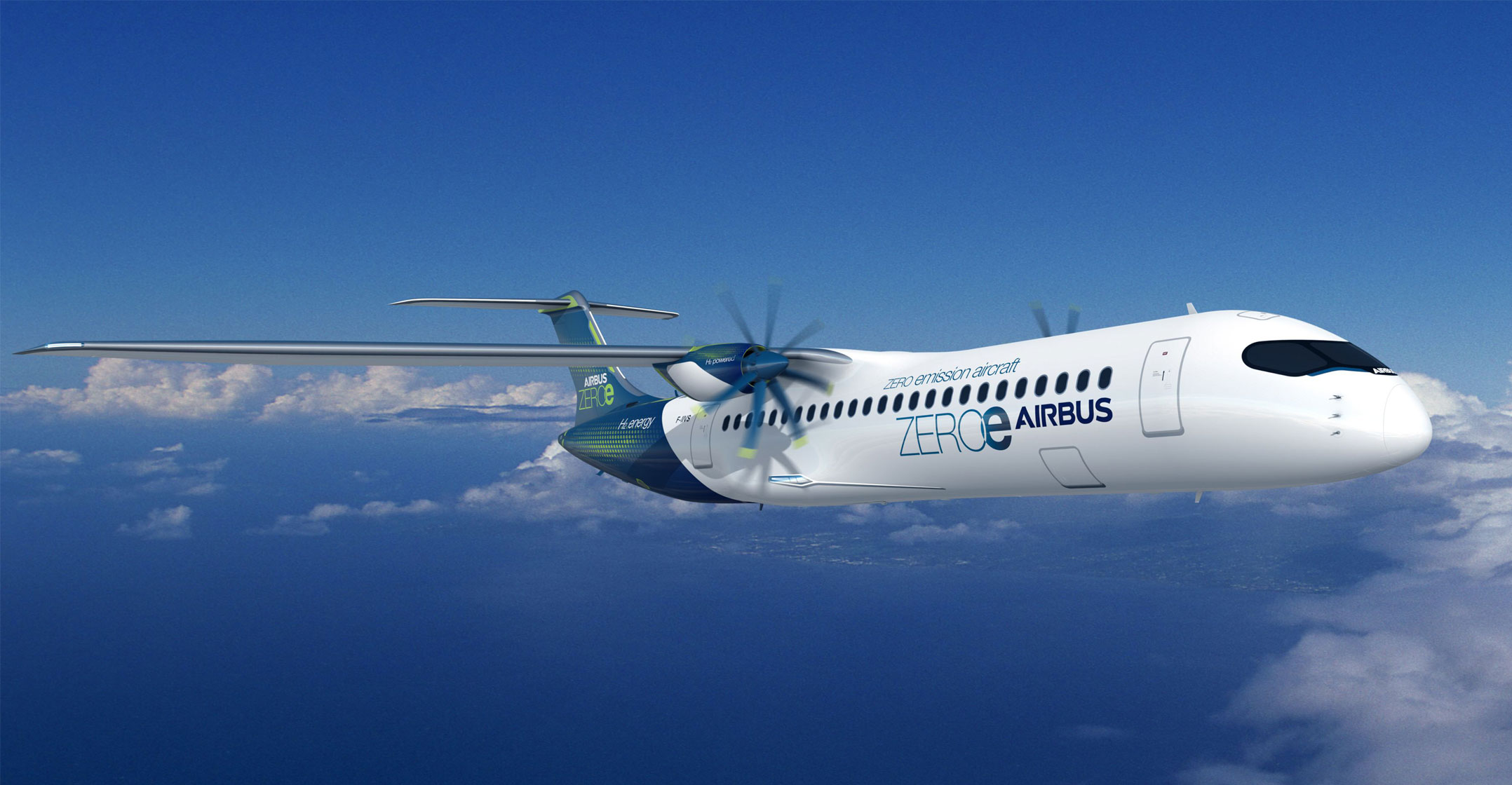Hydrogen has immense potential as a fuel that could relinquish the globe’s dependence on petroleum and other fossil fuels. However, the fuel has its obstacles, including the lack of infrastructure associated with generating, transporting, and holding the fuel. In spite of the challenges that lie ahead, companies are pursuing a future marked by the harnessing of the most abundant element in the universe. Given the potential of hydrogen as an energy source, it is integral that institutions and businesses alike pursue the development of H2 technology.

Currently, much of the world’s attention is focused on electric power in the realm of transportation, but batteries are only beneficial in a select number of applications. Due to the weight of a lithium-ion battery and the time needed to reach full charge, businesses in the rail and air industries could face major inefficiencies. In lieu of conventional electric power, these industries can use hydrogen to their advantage, whether in the form of a fuel cell or an internal combustion setup. In fact, a few companies have started testing and implementing hydrogen solutions that are viable competitors with their petroleum counterparts.


A significant issue with hydrogen that was previously discussed is the storage of the fuel. Due to the low density of H2, large storage systems are required to meet the needs of long-distance transit. However, in aviation and rail markets, the technology used tends to be gargantuan compared to the average automobile. Ergo, trains and planes alike can be better suited for carrying large hydrogen storage systems. In the case of rail travel, a locomotive could incorporate tanks into its long body. Possibly, manufacturers could integrate a hydrogen tender in the same fashion that steam engines had coal tenders. While these concepts seem far-fetched, the Alstom Coradia iLint, a hydrogen fuel cell passenger train, has been in service since 2018 (“Alstom Coradia iLint”). Alstom explains that the locomotives in service have already traveled over two hundred thousand kilometers in Germany and Austria. This feat could not be accomplished without hydrogen infrastructure established along rail lines; the current system refuels the Coradia iLint in fifteen minutes. In terms of efficiency, Alstom’s locomotives are competitive: one train traveled over seven hundred miles without refueling (“Alstom Coradia iLint”). Evidently, hydrogen rail travel is a proven solution with great potential. With the proper funding and research, hydrogen locomotives could provide an all-encompassing replacement to their diesel-electric counterparts.

Undoubtedly, hydrogen fuel can benefit the rail industry. However, the aviation industry has even higher prospects for H2 technology. Lithium-ion batteries as they stand are not a viable solution in airplanes: the immense weight of a powerful battery cell makes flying an electric plane unfeasible. Additionally, when jets burn fuel, they shed some of their original weight, while batteries remain static in mass. Another aspect that batteries lack is the capability to operate over long ranges. Compared to petroleum-burning technology in any industry, a fully charged battery cannot power machinery as long as a full tank of fuel. In the case of airplanes, a dead battery would signal imminent death. Thus, aviation companies are investing large sums into hydrogen power.

Implementing a H2 airplane comes with its challenges, namely fuel storage. Since commercial aircraft consume large quantities of fuel to generate enough power to fly, designers must be mindful of hydrogen storage. Large tanks will be required to hold enough fuel to cross oceans, and the extensive tank size of a large jet has pressing implications on both weight and drag. Engineers must also account for insulation of these tanks, which prevents liquid hydrogen fuel from boiling (Khandelwal, et al.). This aspect of hydrogen implementation would be expensive, but with proper development, costs could be driven down to reasonable levels.

In spite of obstacles like fuel storage, hydrogen’s benefits allure companies to ideate H2-based solutions. Current progress shows hope of hydrogen planes in the near future. A frontrunner in hydrogen aviation is Airbus, one of the most successful companies in the commercial aviation sector. Recently, the company unveiled a hydrogen fuel cell project that they plan to implement by 2035. Airbus views this engine as a significant part of their zero emissions future (“Airbus reveals hydrogen”). Although the engine displayed in the press release is intended for a smaller plane, it is evident that Airbus aims to expand the use of this technology to wide body commercial aircraft. The brand claims that their first plane to feature a hydrogen engine will be able to carry one hundred passengers over a distance of eighteen hundred kilometers. Furthermore, they tested fuel storage systems on an A380 model, which is the largest passenger aircraft on the market (“Airbus reveals hydrogen”). Testing on such scale indicates clear intent of the expansion of hydrogen technology in future aircraft.

Moreover, Cummins, a brand known for its reliable diesel engines, recently tested a hydrogen-powered airplane. Like Airbus’ engine, this aircraft is small in size, but it demonstrates that the potential of hydrogen can be harnessed in the near future. In addition, this plane, called the DLR-HY4, demonstrated the reliability of hydrogen as it flew 30 consecutive two-hour flights (Cummins). To put this into perspective, two hours in a commercial jet is enough time to travel from Germany to Sicily. With plans to seat 40 passengers over a two-thousand-kilometer flight, Cummins demonstrates hope of green air travel in the future.

Although the aviation industry is taking baby steps towards a hydrogen future, it indicates that carbon-neutral overseas travel could be on the horizon. Companies like Airbus, Cummins, and Alstom demonstrate that hydrogen has a place in the transportation industry as a viable alternative to petroleum fuels. What is left is in the hands of governments and scientists alike. Policies that subsidize hydrogen infrastructure could be the key to unlocking clean transit, while the research and development could be the treasure found behind the lock. So, while hydrogen may not be at the level required for implementation, it is important to realize the potential to reach that level.
Sources:
https://www.cummins.com/news/2021/04/15/cummins-hydrogen-power-takes-flight
This is another great post–I love how you’ve had an arc of sorts across these posts. First you acknowledged the problems, and you’ve now been steadily moving to proposing solutions, culminating with this final post, which outlines the potential of “the most abundant element in the universe.”
I think, regarding the issue brief (if you choose to tackle this energy-based topic), you’re in a great place for noting the aspects of a proposed policy change and the instruments of it.
Firstly, your “harms” for this specific problem are rather well-known and easy to justify–in the world we live in, nearly everybody has at least heard of potential changes in energy to “go more green.” However, I think that specific problem faces the potential issue of being on-the-nose enough to lose some interest for exactly the reason that it is easy to justify addressing: it is well-known. Perhaps revealing an unknown aspect of the situation may better sell the audience on the topic and harms.
Next, your issue area is very direct and easy to note–it falls pretty directly into environmental action and protection.
I am curious where you’ll take the Jurisdiction of this–this seems like a very hefty and high-profile issue, if you understand what I mean. To me, the jurisdiction seems like it should act at a higher level, but you could certainly modify it to act at lower levels.
Regarding policy instruments, I think that your bread and butter might be mandates and inducements, like a lot of environmentally-based policies and laws end up being. Penalties for those who don’t switch, and incentives to switch will probably act well for your topic as of now.
Overall, I really enjoyed reading your series of posts–I feel like I learned a lot, and I wish you luck with the issue brief!
Hey this was a great post! As someone who is quite interested in aviation, I agree hydrogen power is arguably the best for the Aviation industry. The work you mentioned by companies like Airbus showcase that there will still be a place for aviation in a zero carbon world.
contn:
I also like the issues you mentioned on how electrification could potentially make airline travel less safe.
Since aviation is a global industry, what sort of global cooperation do you think is needed to help electrify aviation? Also, how should we go about making policy, especially since American policy on this issue will impact industry in all nations?
This was a really unique post. I liked how it was going along with your previous post on hydrogen fuel but with other vehicles. I think it is really cool that companies are trying to find alternative sources of fuel for large vehicles such as an aircraft. I will say that it can be very difficult to implement this because it needs to be earned the trust of passengers. It would require lots and lots of testing before the average person would trust this vehicle.
Trains would be a great idea and a good place to start. Trains are already a better method of transportation than vehicles because they are more sustainable than cars, so making an even more eco-friendly train would be very beneficial to the environment.
I wonder what kind of policies are required to allow these kinds of vehicles to be allowed and especially how long it will take, especially because the government seems to not pay too much attention to climate change. Also, big businesses that rely on traditional methods of fuel for their vehicles will not be very happy with new creations such as these, so this might lead to a lot of debate before we can ever see any of these vehicles in public use.